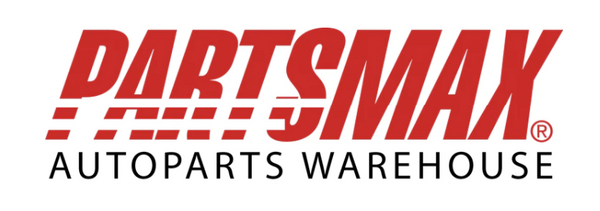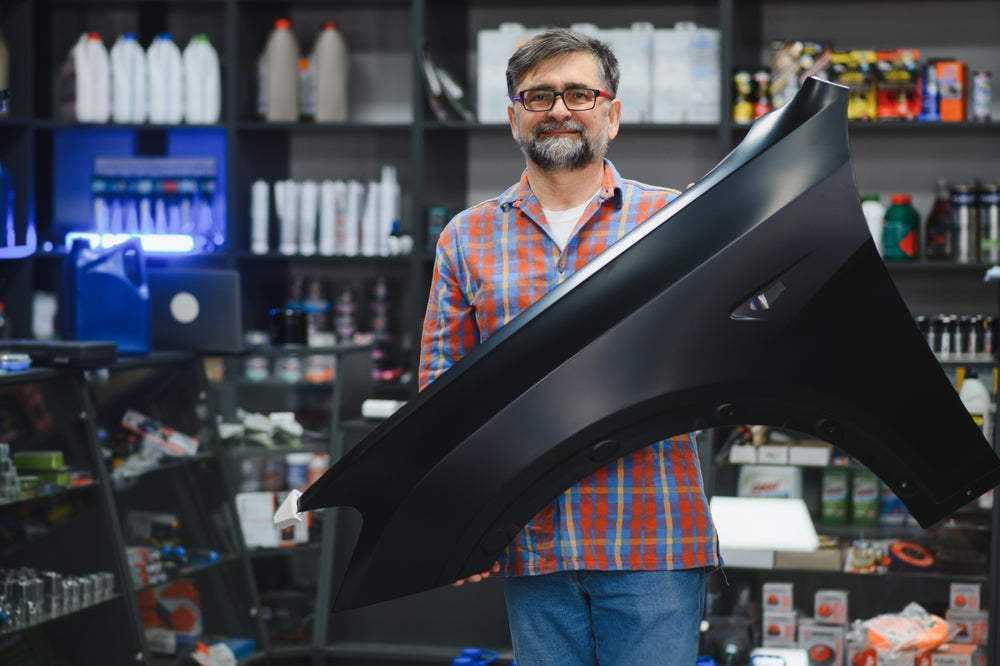Aftermarket parts quality control has become more critical than ever as counterfeit automotive components flood the market, costing the industry over $12 billion annually. With fake parts posing serious safety risks and potential liability issues for repair shops and vehicle owners, knowing how to distinguish genuine aftermarket components from dangerous counterfeits can protect both your business and your customers' lives.
At PartsMax, we've spent over 25 years navigating the complex landscape of automotive aftermarket parts, and we've seen firsthand how proper quality control procedures can make or break a business. Whether you're a collision repair professional, auto body shop owner, or DIY enthusiast, this comprehensive guide will equip you with the knowledge and tools needed to identify authentic, high-quality aftermarket parts.
The Growing Problem of Counterfeit Aftermarket Auto Parts
The automotive aftermarket has experienced explosive growth, but with it comes an alarming increase in counterfeit components. Industry experts estimate that nearly 1 in 10 aftermarket parts sold globally may be counterfeit, with collision parts like bumpers, fenders, and headlights being among the most frequently targeted components.
In South Florida's robust automotive market, particularly across Miami-Dade, Broward, and Palm Beach counties, counterfeit parts often enter through various distribution channels. These fake components typically originate from overseas manufacturers who copy legitimate designs but use substandard materials and manufacturing processes.
The financial impact extends beyond the initial purchase price. Collision repair facilities using counterfeit parts face increased warranty claims, customer dissatisfaction, and potential legal liability. More importantly, these substandard components can fail during critical moments, putting vehicle occupants and other road users at serious risk.
Visual Inspection Techniques for Authentic Aftermarket Parts
Packaging and Documentation Red Flags
How can you identify fake auto parts through packaging? Authentic aftermarket parts feature high-quality packaging with clear manufacturer branding, proper documentation, and certification marks, while counterfeit parts often have blurry printing, spelling errors, and missing safety certifications.
Genuine aftermarket parts typically arrive in sturdy packaging with crisp graphics, accurate product information, and proper regulatory markings. Look for:
- Clear, professional printing without spelling errors or grammatical mistakes
- Proper manufacturer contact information and website details
- Certification marks from organizations like DOT, SAE, or SEMA
- Holographic security features or tamper-evident seals
- Comprehensive installation instructions and warranty information
Physical Component Inspection Methods
Quality aftermarket parts should feel substantial and well-constructed. Examine the component's weight, as counterfeit parts often use cheaper, lighter materials. Check for smooth edges, consistent paint coverage, and proper finishing. Genuine parts typically have uniform construction with attention to detail in areas like mounting points and connection interfaces.
Pay special attention to any plastic components, as these are often the easiest to spot when examining counterfeit parts. Authentic aftermarket plastics should have consistent coloring, proper flexibility, and resistance to cracking under normal pressure.
Brand Markings and Serial Number Verification
Most reputable aftermarket manufacturers include specific markings, part numbers, and sometimes QR codes on their components. These identifiers can be cross-referenced with manufacturer databases to verify authenticity. Be wary of parts with generic markings, missing part numbers, or markings that don't match the manufacturer's standard format.
Technical Quality Control Standards for Aftermarket Components
Industry Certification Requirements
What certifications should quality aftermarket parts have? Legitimate aftermarket parts should carry certifications from recognized organizations like SEMA (Specialty Equipment Market Association), DOT (Department of Transportation), or SAE (Society of Automotive Engineers), depending on the component type.
Understanding these certification standards helps ensure you're purchasing components that meet or exceed original equipment specifications. For collision parts, look for ABPA (Automotive Body Parts Association) compliance, which ensures parts meet strict quality and fitment standards.
Material Testing and Durability Assessments
Quality aftermarket parts undergo rigorous testing for material strength, temperature resistance, and durability. In Florida's challenging climate, parts must withstand high humidity, salt air exposure, and intense UV radiation. Authentic aftermarket components are designed and tested to perform reliably under these conditions.
Reputable manufacturers conduct impact testing, corrosion resistance testing, and fatigue testing to ensure their parts meet long-term performance requirements. This testing documentation should be available from legitimate suppliers upon request.
Digital Tools and Resources for Parts Authentication
Manufacturer Database Verification Systems
Modern technology offers several tools for verifying parts authenticity. Many manufacturers now provide online portals where you can enter part numbers or scan QR codes to verify genuine components. Mobile apps like those offered by major aftermarket brands can quickly authenticate parts using your smartphone camera.
These digital verification systems often provide additional information about the part, including installation guides, warranty details, and compatibility information.
Professional Network Resources
How do you find reliable aftermarket parts suppliers? Research suppliers through industry associations like SEMA or ABPA, check their business credentials, verify their physical location, and seek recommendations from other professionals in your network.
Building relationships with established, reputable suppliers is crucial for maintaining consistent quality. Look for suppliers who:
- Maintain membership in professional organizations
- Have a physical location you can visit
- Provide detailed product documentation
- Offer comprehensive warranty coverage
- Have a track record of customer satisfaction
Red Flags: Warning Signs of Counterfeit Auto Parts Suppliers
Pricing That's Too Good to Be True
While competitive pricing is important, prices significantly below market rates often indicate counterfeit or substandard parts. Understanding typical wholesale and retail pricing structures helps identify unrealistic deals that likely involve compromised quality.
Questionable Business Practices
Be cautious of suppliers who:
- Pressure you to make immediate decisions
- Cannot provide proper business documentation
- Offer limited or no warranty coverage
- Have no physical business address
- Cannot provide manufacturer certification documentation
Geographic and Supply Chain Concerns
Parts with unclear origins, unusual shipping routes, or missing import documentation raise serious quality concerns. Legitimate aftermarket parts should have clear supply chain documentation showing proper distribution channels.
Best Practices for Establishing Quality Control Procedures
Vendor Qualification and Audit Processes
How do you evaluate aftermarket parts vendors? Establish a vendor qualification process that includes reviewing business credentials, requesting quality certifications, checking references, and conducting periodic performance evaluations to ensure ongoing compliance.
Develop a comprehensive vendor assessment that covers:
- Business licensing and insurance verification
- Quality system certifications
- Financial stability assessment
- Reference checks with other customers
- On-site facility inspections when possible
Incoming Inspection Protocols
Implement systematic inspection procedures for all incoming parts. Create standardized checklists that cover packaging inspection, documentation review, physical component examination, and test fitting when applicable.
Document all inspection results to establish quality trends and identify potential supplier issues before they impact customers. This documentation also provides valuable protection in case of warranty claims or liability issues.
The Financial Impact of Quality Control on Your Business
Cost-Benefit Analysis of Quality Aftermarket Parts
Are quality aftermarket parts worth the extra cost? Yes, quality aftermarket parts typically cost 10-30% more initially but save money long-term through reduced warranty claims, fewer customer complaints, and improved reputation, often resulting in 2-3x return on investment.
Consider the total cost of ownership, including:
- Initial purchase price
- Installation time and labor costs
- Warranty claim frequency
- Customer satisfaction impact
- Potential liability exposure
Risk Management and Liability Considerations
Using counterfeit or substandard parts can expose your business to significant liability risks. Insurance companies may deny claims involving counterfeit parts, and legal liability for accidents caused by part failure can be devastating to a business.
Proper documentation of your quality control procedures and parts sourcing provides crucial protection against liability claims and demonstrates due diligence in parts selection.

PartsMax's Quality Assurance Process
At PartsMax, our commitment to authentic aftermarket parts stems from over 25 years of experience serving South Florida's automotive community. We maintain strict vendor qualification standards and conduct thorough incoming inspections at our 250,000 square foot Miami warehouse.
Our quality control process includes:
- Direct relationships with certified aftermarket manufacturers
- Comprehensive incoming inspection procedures
- Full documentation and traceability for every component
- Customer satisfaction guarantee backed by responsive support
When you choose PartsMax, you're not just buying parts – you're investing in peace of mind that comes from working with a trusted partner who prioritizes quality and authenticity.
Key Takeaways
- Visual Inspection: Check packaging quality, component construction, and proper markings before installation
- Certification Verification: Ensure parts carry appropriate industry certifications (SEMA, DOT, SAE, ABPA)
- Digital Authentication: Use manufacturer verification systems and mobile apps to confirm authenticity
- Supplier Due Diligence: Work only with established, reputable suppliers who provide proper documentation
- Quality Documentation: Maintain detailed records of inspections and supplier performance
- Total Cost Analysis: Consider long-term costs, not just initial purchase price
- Risk Management: Understand liability implications of using substandard parts
Protect Your Business with Proven Quality Control
Implementing robust aftermarket parts quality control procedures isn't just about avoiding counterfeit components – it's about protecting your business reputation, ensuring customer safety, and building long-term profitability. By following the inspection techniques, verification methods, and best practices outlined in this guide, you can confidently navigate the aftermarket parts landscape while minimizing risks.
Don't compromise on quality when your reputation and customers' safety are at stake. For over 25 years, PartsMax has been South Florida's trusted source for genuine, quality-controlled aftermarket collision parts.
Ready to source quality aftermarket parts with confidence?
📞 Call us at (305) 691-1313 to speak with our knowledgeable parts specialists
🌐 Browse our extensive online inventory of certified aftermarket components
🏢 Visit our warehouse at 3401 NW 73rd ST, Miami, FL 33147
Serving Miami-Dade, Broward, and Palm Beach counties with next-day delivery and wholesale pricing. Trust the experts who put quality and customer service first.

